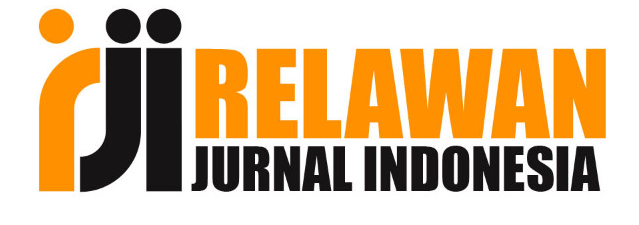Improving Students’ Reading Comprehension On Narrative Texts Using Reap Strategy
DOI:
https://doi.org/10.36982/jge.v8i1.927Abstract
ABSTRACT
The objective of this research was to find out whether or not there was significant difference on reading comprehension achievement between the eleventh grade students of SMA Karya Ibu Palembang who were taught by using  REAP technique and those who were not. The population of this research was the eleventh graders of SMA Karya Ibu Palembang. 62 students were selected as the sample of this study by using purposive sampling technique. They were divided into two groups, experimental and control group. Each of them consisted of 31 students. To conduct this research, quasi experimental design was applied. The instrument for collecting data used was reading comprehension test that was distributed to the sample twice (pretest and posttest). There were 30 valid items of questions in the form of multiple choices. The result of the test was analyzed by percentage formula. The data obtained were also analyzed statistically by using SPSS. The result of the test showed that the significance two tailed was 0.027 which was lower than 0.05. With df 60, the result of independent sample t-test revealed that the t-table was 2.0003. As the t-obtained was higher than t-table (2.260), hence the null hypothesis (Ho) was rejected and the alternative hypothesis (Ha) was confirmed. It can be said that there was a significant difference on reading comprehension achievement between the students who were taught by using REAP (Reading, Encoding, Annotating, Pondering) technique, and those who were not.
Keywords : Reading Comprehension, REAP Technique, Narrative Texts
ABSTRAK
Tujuan penelitian ini adalah untuk mengetahui adakah perbedaan yang signifikan terhadap prestasi pemahaman membaca antara siswa kelas XI SMA Karya Ibu Palembang yang diajar dengan menggunakan teknik REAP dan yang tidak. Populasi dalam penelitian ini adalah siswa kelas XI SMA Karya Ibu Palembang. 62 siswa dipilih sebagai sampel penelitian ini dengan menggunakan teknik purposive sampling. Mereka dibagi menjadi dua kelompok, kelompok eksperimen dan kelompok kontrol. Masing-masing terdiri dari 31 siswa. Untuk melakukan penelitian ini, desain quasi eksperimental diterapkan. Instrumen untuk mengumpulkan data yang digunakan adalah tes pemahaman membaca yang dibagikan kepada sampel sebanyak dua kali (pretest dan posttest). Ada 30 item pertanyaan yang valid dalam bentuk pilihan ganda. Hasil tes dianalisis dengan rumus persentase. Data yang diperoleh juga dianalisis secara statistik dengan menggunakan SPSS. Hasil tes menunjukkan bahwa signifikansi two tailed adalah 0,027 yang lebih rendah dari 0,05. Dengan df 60, hasil dari sampel independen t-test menunjukkan bahwa t-tabel adalah 2.0003. Karena t-hitung lebih tinggi dari t-tabel (2,260), maka hipotesis nol (Ho) ditolak dan hipotesis alternatif (Ha) dikonfirmasi. Dapat dikatakan bahwa ada perbedaan yang signifikan pada pencapaian pemahaman membaca antara siswa yang diajar dengan menggunakan teknik REAP (Reading, Encoding, Annotating, Pondering), dan mereka yang tidak.
Kata kunci: Pemahaman Membaca, Teknik REAP, Narrative TextsReferences
Allen, J. 2004. Tools for teaching content literacy. Portland, ME: Stenhouse Publisher.
Creswell, J. W. 2009. Research design: Qualitative, quantitative and mixed methods approaches (3th ed). Lincoln: University of Nebraska.
Dara, D. 2019. Investigating English Reading Comprehension Problems of Cambodian High School Students. American International Journal of Social Science. 8 (3): 52-56.
Fauziyah, Y. 2014. The effectiveness of using reading, encoding, annotating and pondering (REAP) technique towards students’ reading skill of descriptive text (A quasi-experimental study at the seventh grade of MTs Salafiyah). Thesis (online). Jakarta. Faculty of Tarbiyah and Teacher Training Syarif Hidayatullah State Islamic University. Retrieved from http://repository. uinjkt.ac.id/dspace/bitstream/123456789/24840/1/Yayah%20Fauziyah.pdf.
Harmer, Jeremy. 2007. The Practice of English Language Teaching-4 th Ed. Oxford: Pearson Longman.
Mickulecky, B.S. 2008. Teaching Reading in a Second Language. Oxford: Pearson Education.
Mirzana, A. Z. 2014. The comparison by using REAP (Reading, Encoding, Annotating, and Pondering) strategy and KWL (What I Know, what I want to know, what I have to Learned) strategy in the teaching reading comprehension to the eleventh grade students of SMA PGRI 2 Palembang. Unpublished Thesis. Palembang: PGRI University.
Nisa, I., and Mubarok, H. 2018. The Effectiveness of Using Station Rotation Model to Improve Students’ Reading Skill in Recount Text (A Quasi Experimental Research at the Tenth Grade Students of MA NU Mu’allimat Kudus). Jurnal Edulingua. 5(1): 37-46.
Neuman, W. L. 2007. Basic of social research: Qualitative and quantitative approaches, second edition. Pearson Education, Inc.
Nunan, D. 2003. Practical English language teaching. New York: McGraw-Hill.
Santi, V., M. 2015. Improving Students’ Reading Comprehension by Using REAP (Read, Encode, Annotate, Ponder) Strategy. Journal of Linguistics and Language Teaching. 2(1): 1-7.
Sholihah, F., A. 2017. The Effectiveness of Reading, Encoding, Annotating, and Pondering (REAP) Strategy in Improving Students’ Reading Skill. JU-ke. 1(2):59-65.
Downloads
Published
How to Cite
Issue
Section
License
Global Expert: Jurnal Bahasa dan Sastra is published by Universitas Indo Global Mandiri and licensed under a Creative Commons Attribution-ShareAlike 4.0 International License.










